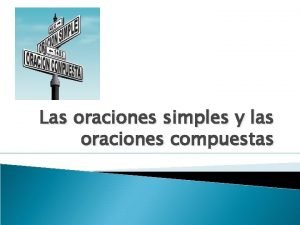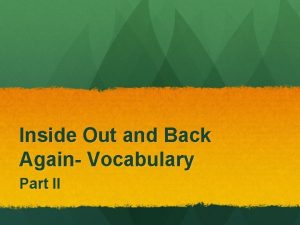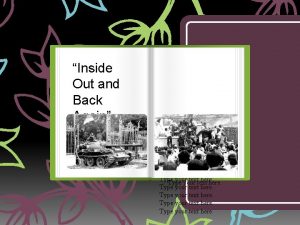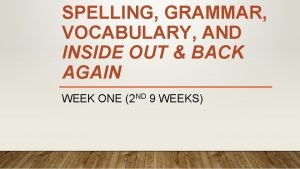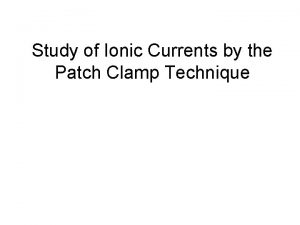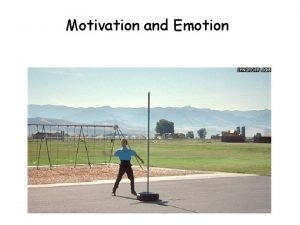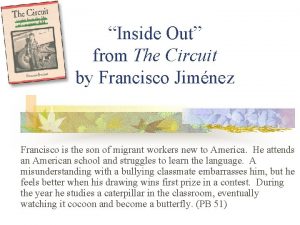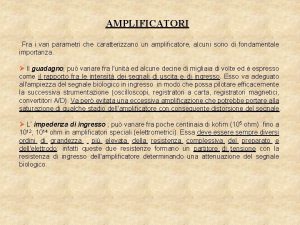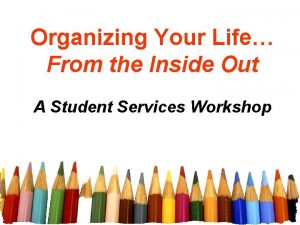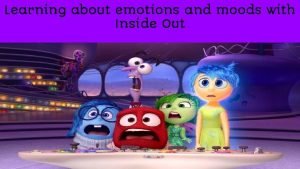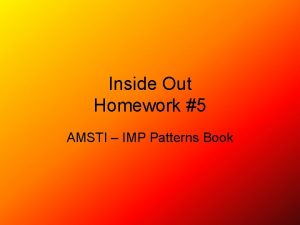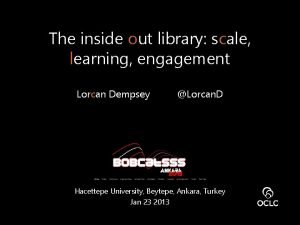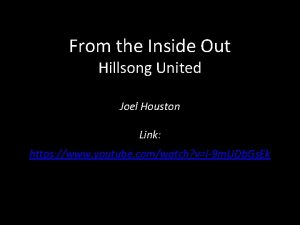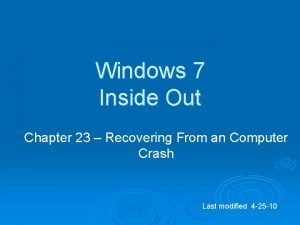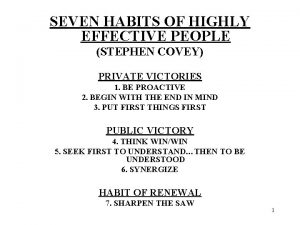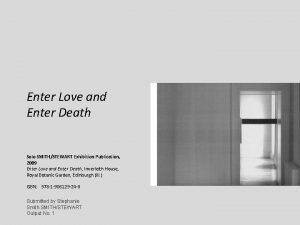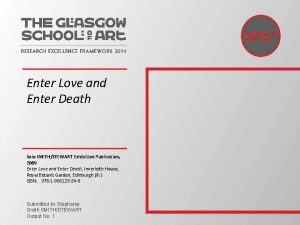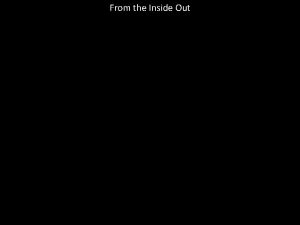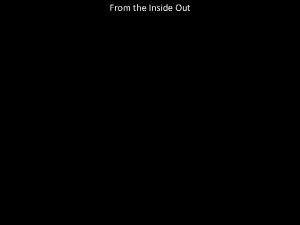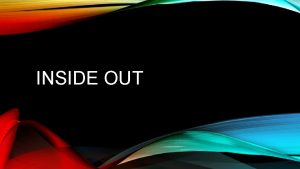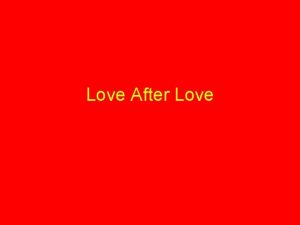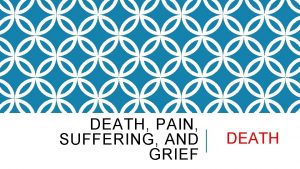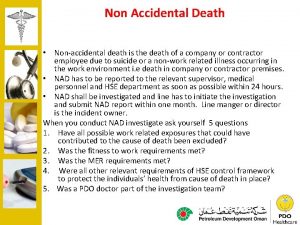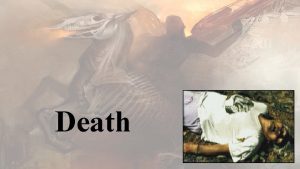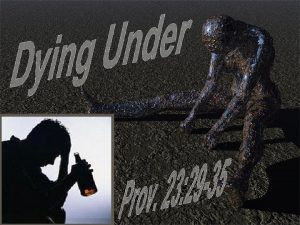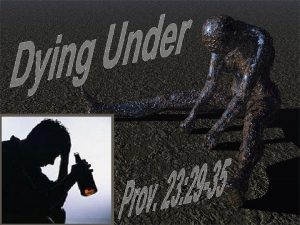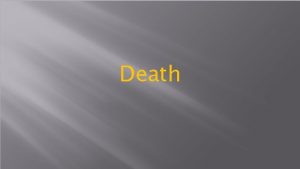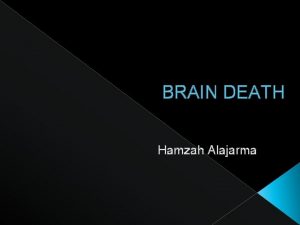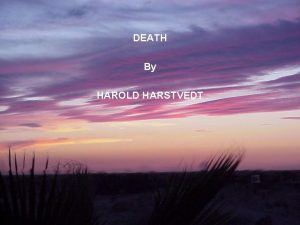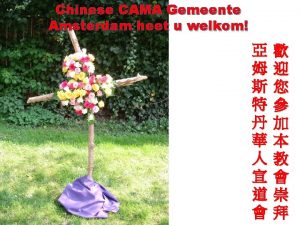Enter Love and Enter Death Inside Out Solo




















- Slides: 20

‘Enter Love and Enter Death’ + ‘Inside Out’ - Solo SMITH/STEWART Exhibition Publication, 2009 Enter Love and Enter Death, Inverleith House, Royal Botanic Garden, Edinburgh (ill. ) developed from exhibition of the same name. - Inside Out presented in international group exhibition/s, ‘Acts of Voicing: On the Poetics and Politics of the Voice’ – each exploring ways of physically implicating the viewer. Submitted by SMITH/STEWART Output No. 1

Enter Love and Enter Death Output 1. - Solo SMITH/STEWART Exhibition Publication: 2009 Enter Love and Enter Death, Inverleith House, Royal Botanic Garden, Edinburgh (ill. ) ISBN: 978 -1 -906129 -24 -8 [Developed from Solo Exhibition of same name: 2007/8 Enter Love and Enter Death, Inverleith House, Royal Botanic Garden, Edinburgh] + related research output: - Group Exhibition (with publication) Acts of Voicing: On the Poetics and Politics of the Voice 2012/13 Württembergischer Kunstverein Stuttgart, Germany 2013 Para/Site Art Space, Hong Kong 2014 Total Museum of Contemporary Art, Seoul incl: John Baldessari, Samuel Beckett, Gary Hill, Jacques Lacan, Anri Sala, Imogen Stidworthy, Marcus Steinweg and others Work shown: Inside Out (1997) video installation b&w, looped, with sound. Exhibition Publication due January 2014 1 SMITH/STEWART Stephanie Smith Eddie Stewart Image one & a description of what we are looking at in the context of the project.

Collaboration Our work is predominantly about relationships, starting with our own. We have worked collaboratively (& been together as partners) for just over 20 years. Our roles within our collaboration are indistinguishable - we are in effect one artist, SMITH/STEWART. We both have equal input at all stages of the work, from its conception, research, fabrication (often as performers in the work itself), installation, dissemination. We haven't made work separately since the mid-nineties and our practice continues to be solely in collaboration with each another (though in more recent works we are reaching out to the audience &/or invited participants to extend this collaboration further). A key strand of our research practice is the physical implication of the viewer/audience within the work itself. Image one & a description of what we are looking at in the context of the project.

We have always stated that we make ‘sculpture’ whilst simultaneously challenging notions of what sculptural practice involves. Early pieces - predominantly performance-tocamera video installations - involved the dual interaction of a man and woman (ourselves) often in extreme situations requiring mutual complicity and trust. Recent works have employed mechanised structures and objects; architectural interventions (as in the exhibition Enter Love and Enter Death); and performances utilising constructed situations with specific groups of people. Current work places the viewer in the middle of stark sculptural installations, so that their actual physical experience of the work makes it function and have meaning. Our own practice continually pushes the possibilities of collaboration: fundamental concerns revolve around human relations and what people are capable of doing to one another, physically and psychologically. We want to engage the viewer with ideas about the nature of the relationships we have with one another (intimate, familial, social, political). Central to this exploration is the body and its context and different media are used to explore ideas of separation, unity and ultimately, mortality. NB: The publication Enter Love and Enter Death is being cited as the main output but this is obviously the publication of the exhibition of the same name which took place at Inverleith House, Royal Botanic Garden, Edinburgh, Scotland late 2007/early 2008. Mechanics of personal inter-relations drive our work and we aim to set up space to create a performative situation which forces the viewer to make a decision - a decision which will have implications affecting their experience of the piece and the consequences of participating or not - in what we’ve constructed. Either way, this decision becomes the work. For an overview of selected works from 1993 to present, visit our website <www. smithstewart. co. uk> Image one & a description of what we are looking at in the context of the project.

-Questions: Can a publication - through specifically treated documentation and a deliberately unconventional layout structure - in any way 'replicate' the viewer's real experience of sculptural work in the installation space? Can the publication act as a work in itself? How to physically implicate the viewer both in the work and as a performer in the actual installation space itself? Enter Love and Enter Death was our solo exhibition made for the seven rooms of Inverleith House, the gallery in the Georgian mansion in Edinburgh’s Royal Botanic Garden. In a pared-back and confrontational installation throughout the building, handmade sculptural constructions divide the space and the bodies of those populating it. The fabricated structures marked out the space (and its imagined potential functions). These divisions, determined to some extent by the fabric of the architecture, suggest feelings of somehow being categorised; split up into oppositional camps or simply surrounded. Through minimal means, the viewer's vision is obstructed and their movement frustrated: They are implicated within the work and forced to experience it. Once inside, the proximity and position of the framework compound the impossibility of being able to see the entire structure which is only comprehensible in the mind’s eye or imagination. These ideas were transposed into print on paper in a large-scale publication which attempted to be an extension of the work as well as its particular document. We used black & white photocopies of our documentation to give a sense of the work's simple, direct presence and deliberately utilised zooming in, white borders and breaks from this reproduction process as part of the structure of the book's layout. This was then scanned, designed and printed in a limited edition, working with renowned book designer Robert Dalrymple, Edinburgh. Image one & a description of what we are looking at in the context of the project.









The physical (& equally psychological) implication of the viewer in our work has been an area of interrogation running through our practice and was earlier explored in a video installation, Inside Out shown recently in the context of international group show ‘Acts of Voicing’ is a transdisciplinary exhibition project that focuses on the aesthetic, performative and political significance of the voice from the vantage point of visual art, performance, and theory. The exhibition centres on the nature of the voice as an event and performance, its techniques, efficacies and modes of functioning. ‘Acts of Voicing’ looks into these and other questions in an exhibition which seeks to fathom the possibilities and limits of a performative exhibition model. The aim is to create a fabric of space that is at once a workspace and stage for exhibits, performances, lectures and workshops. Instead of a static exhibition display, the idea is to create a space of experience that is constantly changing, all the time forging new, surprising links between exhibits and events, exhibition and performance, art and discourse, and between art and the viewer. ‘Acts of Voicing’ thus sets out to interrelate three central spheres of contemporary art discourse: the question of the politics and poetics of the voice, of the peculiarities and relationships of visual art, dance/performance and theory, and of the realignment of their spaces of action and performance. The work shown, Inside Out 1997, was shot from inside the oral cavity looking out using a small black & white CCTV type video camera. The resulting video was then installed on a small monitor in a self-contained entirely dark room. This re-presentation of an early work (first shown in our solo show at Anthony d’Offay Gallery, London in 1997) was therefore reframed in its relationship to the specific exhibition context of ‘Acts of Voicing’. Image one & a description of what we are looking at in the context of the project.

The image shows the back of the teeth and lips and, as the mouth opens to breathe, a bright space is revealed beyond. The installation space itself is thus illuminated when the mouth opens to breathe and returns to darkness when the mouth closes. The mouth becomes like an eye and the installation room becomes like the inside of a / one’s head. “Like many works by the Scottish artist duo Smith and Stewart, Inside Out can be read as a reference to the author Samuel Beckett. In his text “Hooded. Bared, ” Beckett describes an opening and closing eyelid. In Inside Out the mouth becomes an organ of fascination and the camera an organ of the gaze: we see an opening and closing mouth. When the mouth closes, the space becomes enveloped in absolute darkness and silence. Not until the mouth again opens and breathes is a white light engendered, facilitating communication between the inside and outside. This act of physically breathing alludes to the relationship between language and visualization: breath becomes image and sound, with the mouthbound camera taking on the role of the retina, the mouth thus replacing the eye. The play on darkness and light, along with the suspension of distance between image and beholder, makes viewers aware of their breathing as a fundamental, preverbal, corporeal act. ” (Württembergischer Kunstverein Stuttgart) The viewer thus has to wait for the passages of light in order to be able to leave the space, consequently being bodily implicated - indeed physically trapped - in the work. As outlined, this direct physical - and psychological – implication of the viewer/audience as a performer in the work is an ongoing area of research for us and has been developed in recent sculptural installations (and as outlined previously in the relation to the exhibition and publication, Enter Love and Enter Death). Image one & a description of what we are looking at in the context of the project.



The resulting artists' book, Enter Love and Enter Death, is a vehicle for the dissemination of a new body of work in the public domain; making it available, in another format, in another way, to a wider audience who may not have had a chance to see the actual exhibition. Exhibition links: http: //www. rbge. org. uk/thegardens/edinburgh/inverleith-house/archiveexhibitions/inverleith-house-archive-mainprogramme/2007/smith-stewart Exhibition Reviews: Art Monthly, Dec-Jan 07 -08, No. 312 http: //www. exacteditions. com/browse/334/35 1/3191/3/29/0/27/312 Scotland on Sunday, January 13 2008 http: //www. rbge. org. uk/assets/files/Gardens/e dinburgh/Smith_Stewart_Scotland_on_Sunday. pdf The Skinny, January 08 http: //www. theskinny. co. uk/art/features/4139 0 -smithstewart_enter_love_enter_death Image one & a description of what we are looking at in the context of the project.

Related output, Acts of Voicing: -Weblinks re. show: -http: //www. wkvstuttgart. de/en/program/2012/exhibitions/acts -of-voicing/introduction/ http: //www. wkvstuttgart. de/en/program/2012/exhibitions/acts -of-voicing/works/ - An illustrated exhibition catalogue, Acts of Voicing: On the Poetics and Politics of the Voice, including essays by curators: Cosmin Costinas (RO / HK), Hans D. Christ / Iris Dressler (DE), Christine Peters (DE) Natalie Boseul SHIN (KR) To be published by Hatje Kantz German/English, January 2014 ISBN: tbc Image one & a description of what we are looking at in the context of the project.

Breath essay: (citing Inside Out & other of our works) The Object Breath by Ruth Evans in ‘Staying Alive: A Survival Manual for the Liberal Arts’ by L. O. Arayne Fradenburg, Punctum Books, New York, 2013) http: //punctumbooks. com/titles/staying-alive/ “As the mouth rhythmically opens and closes, light appears and disappears, by turns lighting up and plunging into darkness the cavity of the mouth, in a visual presentation of inhalation and exhalation. The teeth that open and close function like a camera shutter or obturator. Just as the obturator in desire blocks and lets in the gaze, the voice (Lacan 1979, 147, 159), in accordance with the pulsation of the unconscious as it opens and closes, so here the teeth alternately block and let in the breath-as-light. Breath is here imagined as object-like: both the hole, when open, and the bouchon, the stopper for the hole, when closed (Adams 1996, 104). ” Image one & a description of what we are looking at in the context of the project.
 Love love jesus is love god greatest gift lyrics
Love love jesus is love god greatest gift lyrics Oraciones compuestas
Oraciones compuestas One thing one direction
One thing one direction Inside out vocabulary
Inside out vocabulary Kim ha character traits
Kim ha character traits Inside out and back again vocabulary
Inside out and back again vocabulary Define forensic pathology
Define forensic pathology Gate
Gate Instinct theory of motivation
Instinct theory of motivation Inside out by francisco jiménez
Inside out by francisco jiménez Mothering from the inside out
Mothering from the inside out Inside out patch clamp
Inside out patch clamp Inside out
Inside out Organizing from the inside out
Organizing from the inside out Inside out guessing the feelings
Inside out guessing the feelings Inside out idea generation
Inside out idea generation Shodor function machine
Shodor function machine Inside out library
Inside out library Inside out hillsong
Inside out hillsong Windows 7 inside out
Windows 7 inside out Upward spiral 7 habits
Upward spiral 7 habits

